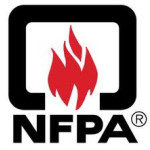- Industry: Fire safety
- Number of terms: 98780
- Number of blossaries: 0
- Company Profile:
Established in 1896, NFPA's mission is to reduce the worldwide burden of fire and other hazards on the quality of life by providing and advocating consensus codes and standards, research, training, and education.
Sleeping areas and any contiguous day room, group activity space, or other common space for customary access of residents.
Industry:Fire safety
Small devices containing limited amounts of pyrotechnic or explosive composition that produce a visible or an audible effect and that are not classified as consumer fireworks.
Industry:Fire safety
Situations involving the release of chemical or biological warfare agents in civilian areas by terrorists.
Industry:Fire safety
Simultaneous detonation or explosion of the total amount or a substantial amount of a quantity of explosive material caused by the explosion of a unit or part of the explosive material.
Industry:Fire safety
Ordinary (moderate) hazard occupancies shall be classified as locations where the quantity and combustibility of Class A combustible materials and Class B flammables is moderate and fires with moderate rates of heat release are expected. These occupancies consist of fire hazards that only occasionally contain Class A combustible materials beyond normal anticipated furnishings and/or the total quantity of Class B flammables typically expected to be present is from 1 gal to 5 gal (3. 8 L to 18. 9 L) in any room or area.
Industry:Fire safety
Signs or inscriptions attached by the manufacturer, for the identification of the type of a component or device.
Industry:Fire safety
Significant, unmitigated release from containment in a time frame prior to effective evacuation of the close-in population such that there is a potential for early health effects.
Industry:Fire safety
Signal and power cables for operation and control of a system.
Industry:Fire safety
Side to side, at right angles to the fore and aft centerline of a ship.
Industry:Fire safety
Short stud wall, less than 8 ft (2. 4 m) in height, between the foundation and the lowest framed floors with studs not less than 14 in. (35 mm) long — also known as a knee wall. Cripple walls can occur in both engineered structures and conventional construction.
Industry:Fire safety
